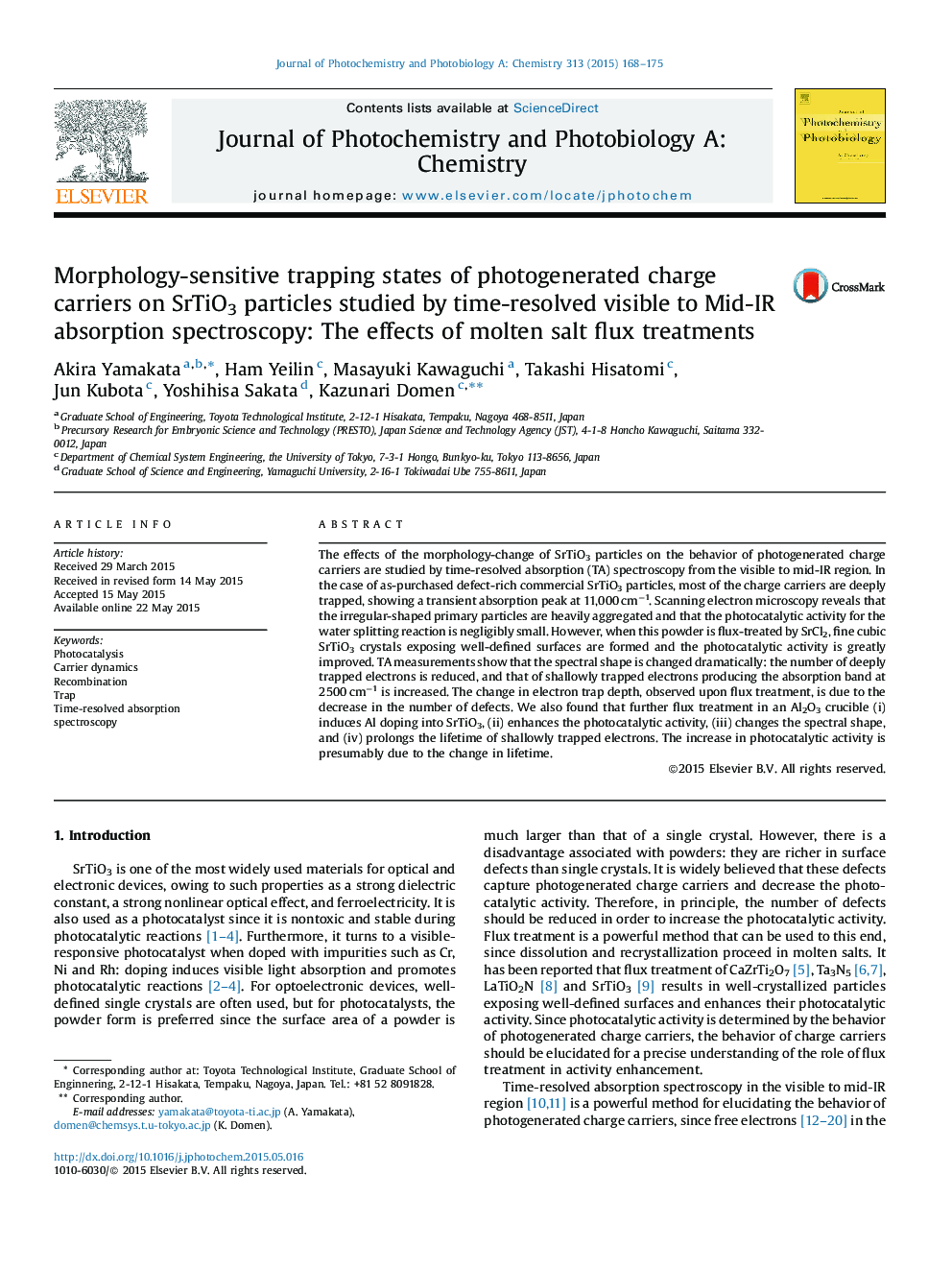| Article ID | Journal | Published Year | Pages | File Type |
|---|---|---|---|---|
| 26480 | Journal of Photochemistry and Photobiology A: Chemistry | 2015 | 8 Pages |
•Flux treatment reduces defects of SrTiO3 particles with well-defined surfaces.•Effects on charge carriers were studied by transient absorption spectroscopy.•Shape of transient absorption of e− and h+ is very sensitive to the morphology change.•Number of shallowly trapped e− increased upon flux treatment.•Water splitting photocatalytic activity also increased upon flux treatment.
The effects of the morphology-change of SrTiO3 particles on the behavior of photogenerated charge carriers are studied by time-resolved absorption (TA) spectroscopy from the visible to mid-IR region. In the case of as-purchased defect-rich commercial SrTiO3 particles, most of the charge carriers are deeply trapped, showing a transient absorption peak at 11,000 cm−1. Scanning electron microscopy reveals that the irregular-shaped primary particles are heavily aggregated and that the photocatalytic activity for the water splitting reaction is negligibly small. However, when this powder is flux-treated by SrCl2, fine cubic SrTiO3 crystals exposing well-defined surfaces are formed and the photocatalytic activity is greatly improved. TA measurements show that the spectral shape is changed dramatically: the number of deeply trapped electrons is reduced, and that of shallowly trapped electrons producing the absorption band at 2500 cm−1 is increased. The change in electron trap depth, observed upon flux treatment, is due to the decrease in the number of defects. We also found that further flux treatment in an Al2O3 crucible (i) induces Al doping into SrTiO3, (ii) enhances the photocatalytic activity, (iii) changes the spectral shape, and (iv) prolongs the lifetime of shallowly trapped electrons. The increase in photocatalytic activity is presumably due to the change in lifetime.
